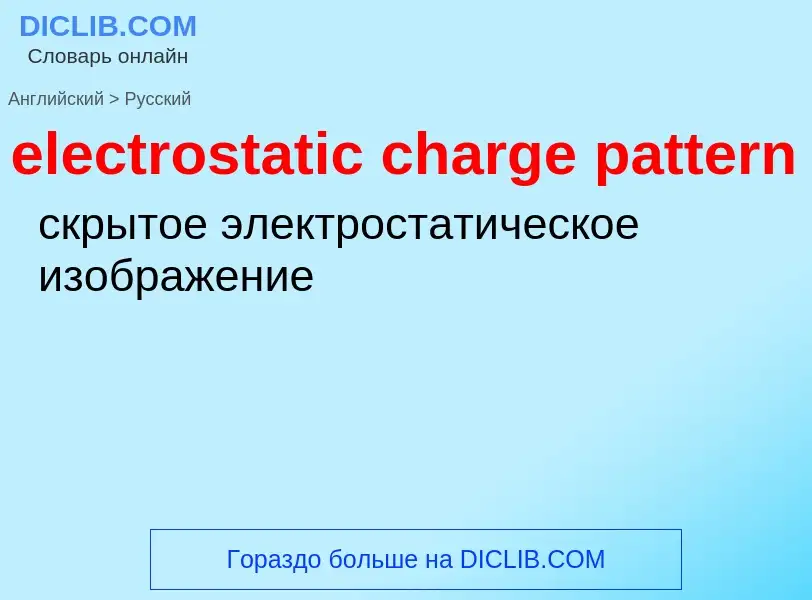Translation and analysis of words by ChatGPT artificial intelligence
On this page you can get a detailed analysis of a word or phrase, produced by the best artificial intelligence technology to date:
- how the word is used
- frequency of use
- it is used more often in oral or written speech
- word translation options
- usage examples (several phrases with translation)
- etymology
electrostatic charge pattern - translation to russian
общая лексика
электростатический заряд
Wikipedia

Electrostatics is a branch of physics that studies electric charges at rest (static electricity).
Since classical times, it has been known that some materials, such as amber, attract lightweight particles after rubbing. The Greek word for amber, ἤλεκτρον (ḗlektron), was thus the source of the word 'electricity'. Electrostatic phenomena arise from the forces that electric charges exert on each other. Such forces are described by Coulomb's law.
Even though electrostatically induced forces seem to be rather weak, some electrostatic forces are relatively large. The force between an electron and a proton, which together make up a hydrogen atom, is about 36 orders of magnitude stronger than the gravitational force acting between them.
There are many examples of electrostatic phenomena, from those as simple as the attraction of plastic wrap to one's hand after it is removed from a package, to the apparently spontaneous explosion of grain silos, the damage of electronic components during manufacturing, and photocopier & laser printer operation. Electrostatics involves the buildup of charge on the surface of objects due to contact with other surfaces. Although charge exchange happens whenever any two surfaces contact and separate, the effects of charge exchange are usually noticed only when at least one of the surfaces has a high resistance to electrical flow, because the charges that transfer are trapped there for a long enough time for their effects to be observed. These charges then remain on the object until they either bleed off to ground, or are quickly neutralized by a discharge. The familiar phenomenon of a static "shock" is caused by the neutralization of charge built up in the body from contact with insulated surfaces.

![accessdate = 18 June 2021}}</ref> This effect is also the cause of [[static cling]] in clothes. accessdate = 18 June 2021}}</ref> This effect is also the cause of [[static cling]] in clothes.](https://commons.wikimedia.org/wiki/Special:FilePath/Cat demonstrating static cling with styrofoam peanuts.jpg?width=200)
![[[Lightning]] over [[Oradea]] in [[Romania]] [[Lightning]] over [[Oradea]] in [[Romania]]](https://commons.wikimedia.org/wiki/Special:FilePath/Lightning over Oradea Romania 3.jpg?width=200)
![torsion balance]] torsion balance]]](https://commons.wikimedia.org/wiki/Special:FilePath/Bcoulomb.png?width=200)
